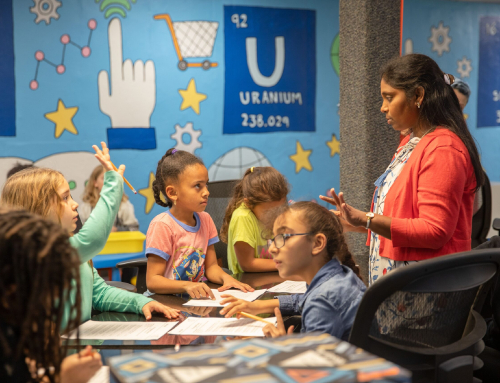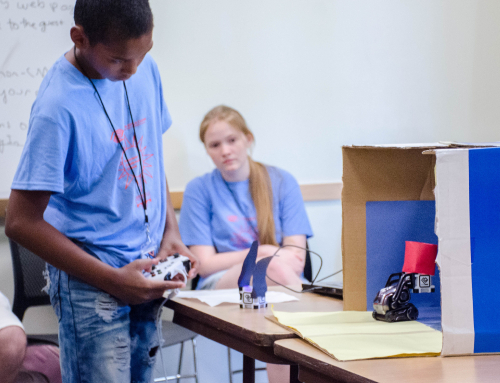Chinese International Students’ Challenges in the US Higher Education
(Jun Liu, Ph.D Stony Brook University)
How do they come?
- About 80% through agencies
- Lack of English learning environment
- Test-oriented teaching & learning for exams Parents too ranking-conscious
- Being admitted without readiness Orientation too general and too short
- Struggling from dependence to independence
What are main challenges?
Language Barriers, Pedagogical Adjustment, Academic Pressure, Social Isolation

Language Barriers
- Poor communicative competence Weak in academic writing
- Lack of contextual knowledge
- Lack of ESP knowledge and skills in academic fields
Pedagogical Adjustment
Teacher-centered classroom vs student-centered classroom Passive learning vs active learning:
- Rote learning vs critical thinking
- Waiting for instructions vs. developing self-management and self-discipline skills Habitual indirectness vs explicitness
Academic Integrity
- Academic dishonesty Plagiarism in homework Cheating in exams Taking tests for others

Social Isolation
- Social harmony and solidarity Habitual humbleness and shyness Contextualized introverted personality
- Confinement to the Chinese Community Unwillingness to mingle and communicate Lack of risk-taking
Intervention 1: Proactive Approach:
- Information sessions in China Interactive website
- Targeted and Prolonged orientation Predictive Analytics
- Mentoring Programs China Center
Intervention 3: Reactive Approach Given them a Second Chance:
(Andrew Chen WholeRen Education)
Involuntary Dismissal from School: Challenges and Next Steps
- Dismissal trends and data of international Chinese students
- Aspects related to institutions and students as involuntary dismissal happens
- Dismissed student —> Second Chance Student
- Options/Needs
- Goals of Educators

Involuntary Dismissal Trends
Please see:
- https://res.accspeed.com/wp-content/uploads/2018/06/2018-White-Paper-EN-0515.pdf
Involuntary Dismissal: School Perspective
- Policies for dismissal vary across schools – the policies may differ for academic integrity, low grades, attendance, conduct, etc.
- Some types of dismissal are automatic, some allow for a hearing, etc.
- All of these are internal policies and specific to each school
- Difficult to understand by domestic and international students
- Was student aware of the situation and repercussions?
- Is the attitude: rules have been violated, and the punishment fits the crime
- For domestic and intl students: the same punishment is unduly harsh for the intl student
- We would argue that the school, upon accepting students, have an obligation to be the educators
Involuntary Dismissal: Student Perspective
- Student may not be aware of the school policies and culture
- Language barriers and cultural differences
- What were the school’s efforts to educate the student on the cultural differences/expectations
- Do schools have an obligation to teach students the skills to succeed in a US institution? Or, are they expected to know all U.S. norms by coming to the U.S. for education?
- Student may not be aware of the implications of a suspension
- When “punished’ international students face a legal status issue, unlike domestic students
- Parents may not be aware of how poorly a student was doing (shame/face issues)
- Unaware of the appeal process

Life Cycle of the Second Chance Student:
- Appeal
- Does the school have an appeal process?
- What are the requirements for return?
- What are the immediate options for the student to continue their academics?
- Who can participate in this process? Advisors/Lawyers?
- Appeal
- At Separation
- What are the F-1 compliance requirements for school and for students
- Should an outside consultant involved?
- Should 4 year universities take a below 2.0 GPA student?
- Remedy and GPA recovery at another school
- At Separation
- Re-admission/transfer to new school
- Seeking outside consultant to discuss options
- Re-admission/transfer to new school
- A student has failed to progress academically…but who in the room would therefore believe the student should be banned from any further academic opportunities in the United States?

Considerations of Best Practices/Options:
- An involuntary dismissal can be carried out in various ways:
- Immediate termination of the F1 visa
- Termination as a student, but allowing a 2 week period to transfer
- Even if the involuntary dismissal is the same sanction for a domestic and international student, the international student’s punishment is much harsher
- the international student is faced with deportation and no chance of return for study in the US
- the international student will have no opportunities for study in China
- An involuntary dismissal can be carried out in various ways:
Educator Goals…how to create options:
- As institutions of learning, we should create opportunities to grow/learn/make mistakes
- What does the school “lose” in allowing a student a 2 week window of opportunity to transfer to another institution?
- We do not recommend that schools continue to keep this type of student for a revenue gain, but rather to allow the student another chance at institution that would provide a second chance opportunity
- Perhaps to create partnerships with another institution and service provider so the student has a transfer/recovery option

The Second Chance Opportunity:
- This type of student requires external support to “right themselves”
- Partnerships with another school where a student can recover allow for more intentional learning
- However, second chance students may need additional wraparound support
- There is data indicating a high rate of failure for second chance students who do not have wrap around support
- Third party providers can offer this without taxing a school’s limited resources
- This can also be culturally/language appropriate
In Conclusion:
- Involuntary leave for international students have very severe consequences compared to the same “punishment” for domestic students
- We do not contend that students should all be forgiven for mistakes made, but do believe that as educators, we all hold responsibilities teach (and for students to mistakes)
- Immediate termination of the visa creates virtually no opportunity for an international student to study in the U.S.
- Student support services for such students are critical to “turn the tide” and help student self-actualization
Jun Liu, Donna Mei, Charlie Liu, and Andrew H. Chen




